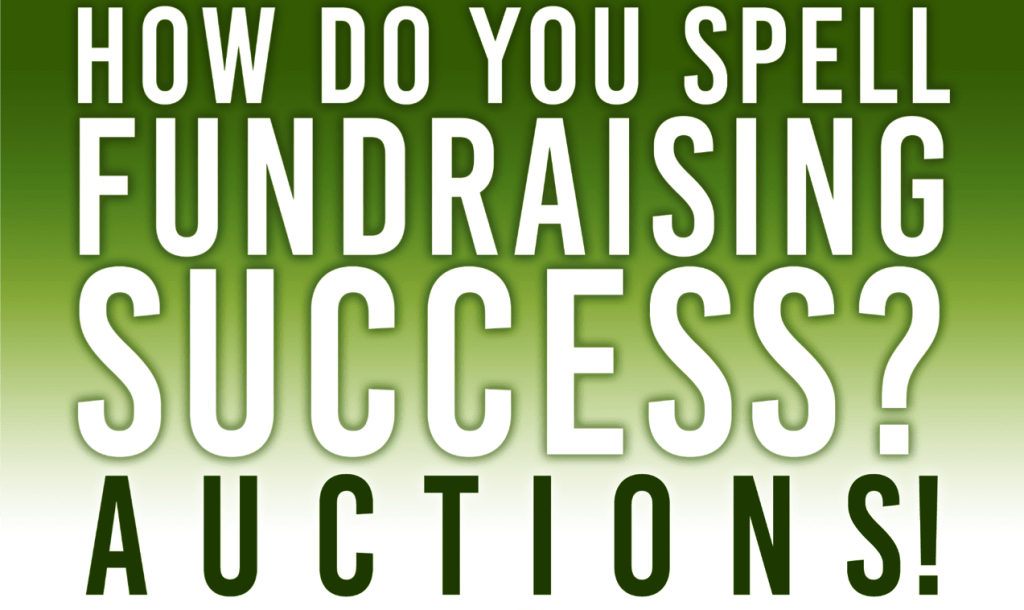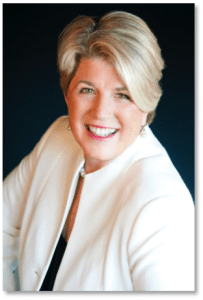
Excerpt of Chapter 2
A HIGHER BID
How to Transform Special Event Fundraising Success with Strategic Benefit Auctions
Are fundraisers, charity galas, and benefit auctions right for you? In most cases, the answer is a resounding yes. Well-designed and executed strategically, these events can be a golden gateway to significant fundraising and long-term donor engagement. Hundreds of thousands of organizations rely on annual benefit auctions and fundraising events as a staple in their development plans.
However, charity auctions and special events are undoubtedly one of the most labor intensive, detail-ridden, volunteer and staff-intensive methods to raise money. Far too many organizations rely heavily on special event fundraising as a key source of income. Bouncing from event to event is a surefire recipe for board burnout, staff stress, and the demise of your donor base—it’s inherently short-sighted and unsustainable.
However, benefit auctions are one of the most powerful catalysts for identifying new donors, engaging audiences, raising funds, having fun, and increasing supporter participation across many levels for long-term giving. Most importantly, your benefit auction event is an untapped golden opportunity to connect your supporters meaningfully and deeply to what they love and care about most—how their gift will positively impact the cause that impassions them.
Volunteers, board members, executive directors, development professionals, auctioneers, caterers, event planners already hold this golden key to success in their hand. Kathy Kingston’s strategies in A Higher Bid will magnetize your golden key to unlock and leverage your ability to raise more money and more deeply engage your donors.
 | Retain an experienced benefit Auctioneer |
 | Select Unique auction items |
 | Cultivate auction guests |
 | Get your Timing right |
 | Inspire your guests to action |
 | Achieve Outcomes |
 | Make sure No bidder’s left behind |
 | Orchestrate your Sounds and lights |
The Role of the Professional Benefit Auctioneer
Retaining a professional benefit auctioneer is the magic ingredient in any auction, taking the risk out of fundraising. Most volunteers across the country work hard year-round to maximize fundraising efforts. When the day of the event arrives, too many organizations turn the auction over to someone who does not have the training, passion, dedication, or relevant knowledge to be your auctioneer. The mayor, a media personality, or even a celebrity will not raise nearly as much money as a professional fundraising auctioneer. This common pitfall means that well-deserving organizations lose hundreds and thousands of dollars of potential fundraising each year.
This is what I call tripping over a thousand-dollar bill to pick up pennies. Typically, a VIP or celebrity auctioneer may have the allure of bringing local prestige to an event. They most often volunteer their time or request only a small honorarium. However, the savings realized on the front end almost always result in a loss of proceeds for the organization in the end. If you’re interested in multiplying your organization’s proceeds by hundreds or thousands of dollars, the most potent way to maximize fundraising efforts is to retain a professional benefit auctioneer.
In 2010, the National Auctioneer’s Association found that auctioneers with a Benefit Auctioneer Specialist (BAS) professional designation raise twice as much for organizations as auctioneers who do not have a BAS professional certification. Further, BAS auctioneers also earn double the profits for their own auction business.1
Your organization will benefit greatly by retaining someone who understands fundraising, who will be dedicated to your cause, and who is a specialist in benefit auctions. Remember, people who attend fundraising auctions are now giving very deliberately, choosing
organizations that touch their hearts and minds. BAS-certified auctioneers are trained to promote philanthropic giving in a professional and strategic way that will maximize proceeds and strengthen connections to your cause.
So how do you find a good professional auctioneer? There is a strong network of professional benefit auctioneers across the United States. Finding one that is right for your organization will take a little bit of research. I’ve included several resources in the Resources section at the back of this book.
Pop Quiz: What Generates the Most Revenue?
Which of the following live auction features generates revenue?
- Experience and credentials of auctioneer
- Composition of audience
- Food style choices
- Live auction items
- Brief inspirational remarks
- Timing
- Sound
- Lights
If you answered yes to all of these, you’re right!
This is what you and your volunteers need to keep in the forefront of your thinking and planning. Other aspects of benefit auction fundraisers, which are often the focus of most committees, do not have the ability to increase your fundraising efforts. Invitation design, tablecloths, and entertainment are important but not essential to raising funds or promoting your cause.
One-of-a-Kind Items Make Your Event Unique
Soliciting and procuring the best auction items for your auction can make the difference in reaching your fundraising goal. Maximizing your fundraising efforts requires you to think strategically and to carefully identify specific items you will want volunteers to solicit before they start asking for donations. The best auction items are the ones that sell for more than their value. The best-selling items are the ones that are unique and match your audience: one-of-a-kind items such as specialty trips, dinners, and other items that guests can find only at your auction.
Finding items that match your audience’s desires and purchasing power will dramatically increase your charity auction proceeds. For example, if your audience is arts and culture focused, unique items that your guests would enjoy might be a package tour in Hollywood, a sold-out concert in your area, or perhaps a New York Broadway show package. If you have an audience that loves sports, consider tickets right behind home plate on the 100th anniversary of your wonderful stadium, or a meet-and-greet with players or coaches.
 A great example comes from the grand opening fundraising gala for the Katharine Hepburn Cultural Arts Center in Connecticut. With my consultation, the gala committee created a live auction item to match the audience’s interest in Katharine Hepburn. They contacted the current owner of her estate, who agreed to donate his home for a dinner party. The committee then procured Chef Jacques Pépin. They put together a dinner for 12 at Katharine Hepburn’s estate prepared by Chef Pépin and served in Katharine Hepburn’s dining room. This item was so successful that it sold for over $8,000—twice!
A great example comes from the grand opening fundraising gala for the Katharine Hepburn Cultural Arts Center in Connecticut. With my consultation, the gala committee created a live auction item to match the audience’s interest in Katharine Hepburn. They contacted the current owner of her estate, who agreed to donate his home for a dinner party. The committee then procured Chef Jacques Pépin. They put together a dinner for 12 at Katharine Hepburn’s estate prepared by Chef Pépin and served in Katharine Hepburn’s dining room. This item was so successful that it sold for over $8,000—twice!There are two ways to determine how to match items to your audience. The first is to review and study records from previous auctions to determine what items were the most
and least desirable and the most and least profitable. Make a list of the top 20 best-selling and worst selling items that your team can use to solicit and procure best-selling auction items.
The second way is to match items to your organization’s cause. For example, a dog rescue group knows that their audience will include dog owners and dog lovers. A perfect auction item for this audience might be a VIP package to the Westminster Dog Show, including airfare, hotel, and VIP access to the event. This unique item would have dog lovers practically drooling.
In both cases, matching items to your audience and your cause requires a thoughtful approach to solicitation, which needs to start long before any volunteers begin asking for donations. Remember, the best auction items are the ones that sell, and the best-selling items are the ones that are unique and match your audience’s interests.
Cultivate auction guests
Developing your audience is a critical aspect of a successful auction. Having a competitive crowd means attracting people who have the capacity to bid high in your auction. Why? You need attendees who have the ability to support you financially. That means you’ll need to put power bidders in the room.
To do this, create a special team which focuses only on getting the right people in the room. This is called audience development, and it’s the most vital aspect of a successful benefit auction. So, form an audience development
team, not a ticket or invitation committee.
An audience development team builds a competitive audience by getting high bidders in the room. If possible, include people who represent different areas of your community, so they can conduct significant outreach to people who can and will bid high.
An audience with the capacity to give generously will drive bidding over 100 percent of the value of items for two main reasons: They have the financial capacity to bid high, and they connect to your cause. Past performance is the best indicator of future performance, so identify your top 10 bidders from past events, and have the audience development team do everything possible to get them to attend again. We’ll discuss audience development in more detail in Chapter 5.
Timing Is Everything
Timing is one of the most overlooked areas in auction planning. Effective timing means putting all of the elements in your program in the best order to support your fundraising goals.
Timing is mainly based on food style choices. So, the very first thing you have to decide is what style of food you will have at your benefit fundraising event: sit-down dinner or food stations. (Note: Buffets don’t work for benefits auctions under any circumstances. If you are considering a buffet, let me be blunt: Don’t.) We’ll discuss this in more detail in Chapter 7.
The number of items you auction will also impact timing. For example, school auctions tend to have a lot more items, which requires starting the meal service earlier. Gala-style auctions typically have just a handful of items, meaning the auction can start later. In any case, time your auction with a stopwatch.
At a recent golf auction for Big Brothers and Big Sisters on Cape Cod, I recommended that the auction team close the silent auction 15 minutes earlier than originally planned, seat golfers immediately, skip the salad, serve dinner with a plated meal, and begin the fundraising auction during dinner. With these minor modifications to the sequencing and pacing of the event, the organization doubled their money. Why? They were able to capture golfers’ attention and dollars right away. They also held the awards ceremony after the dinner and the fundraising auction, which meant that the audience stayed for the entire event.
